The horn loudspeakers fixed on bamboo poles come to life, with the music from Saaz Aur Awaaz cutting through the silence. The flags flutter in the monsoon breeze as I pay Rs. 100 for a ticket and enter the Asiad Circus, in Delhi for the summer. Inside, hundreds of red plastic chairs are placed around the performing arena.
Asiad, which is one of the few surviving circuses in India, has been around for 25 years, travelling around the country and staying in different cities for a month at a time. Though once Eastern European artists used to join Indian ones, nowadays foreign artists are more likely to come from African countries. Anil Kumar, the “Boss” who has managed the circus for over 10 years runs two shows a day and three on the weekends.
Videos by VICE
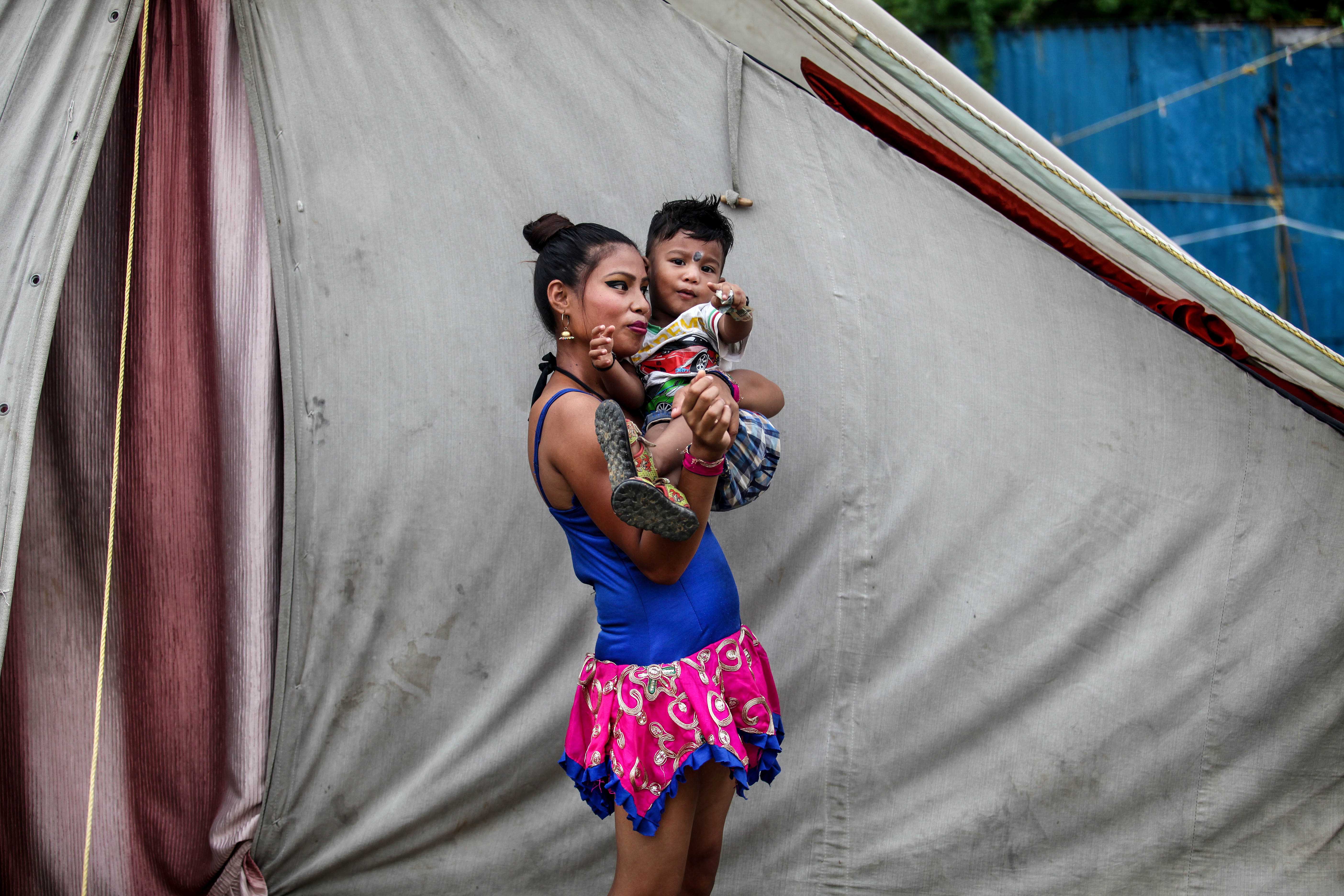
But beyond the big top are the colourful tents of the artists who bring the show to life. These tents are pitched according to an artist’s marital status, and each contains a different world. Bachelors live on the edges while married artists live in the center. There is a separate tent for the artists from outside India, who come on a yearly contract. Most find it difficult to stay during the summers. We peeked into these tents to find out what goes on behind the scenes.
Laughter Club
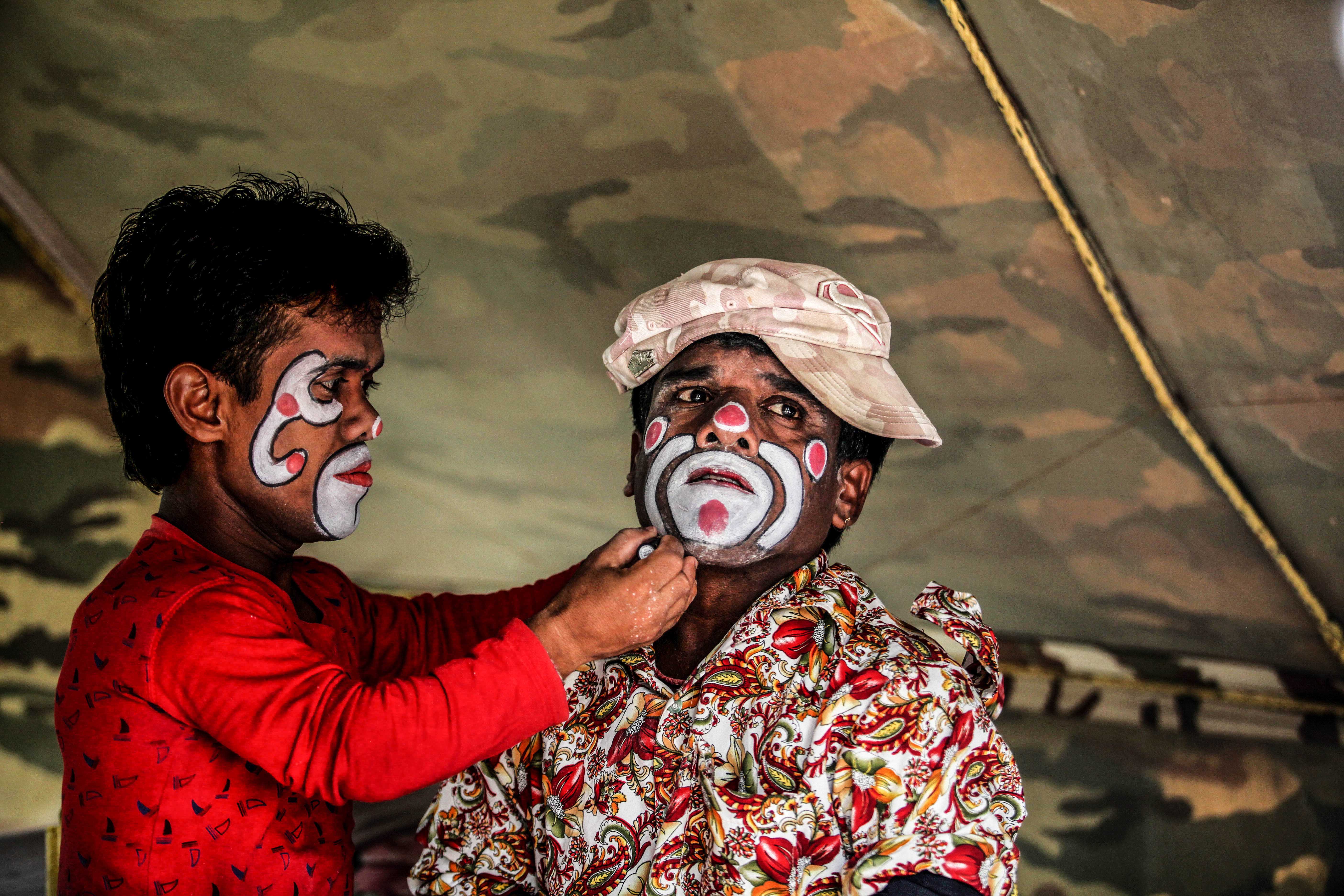
Kashinath Kanaujia is the “Ustad” clown in Asiad Circus. He was nine years old when he first saw Indira Circus in West Bengal, and it was love at first sight. “No one from my family was associated with a circus,” he said. “When I told my parents, they said I ought to be going to school, but I didn’t want to study. I stopped eating for two days, until finally my parents relented.”
Like all new recruits, he was assessed by the ustad for physique and skills. Kanaujia first did odd jobs at a circus, before meeting his ustad, Raju from Tamil Nadu. “Whatever I am today is because of him,” Kanaujia said. He learned horse-riding, balancing a girl in the air on a bamboo, motorcycle tricks, and juggling, not to mention makeup. After three years of training, he did his first show.

Another clown trained by Kanaujia is Chandan Bhardwaj, from Balia. He was 12 when he joined the Gemini Circus, a name immortalised in the film Mera Naam Joker.
“When I started, I was notorious for changing circuses every year,” Bhardwaj said. “I always felt my job was underpaid. Being a clown is so demanding. In order to get into character, you have to forget which part of your body hurts or what problems there are in life. Only one thing matters: making the public laugh.”

While Bhardwaj used to go to whichever circus offered him more money, he said “that freedom has gone, because now only a handful of circuses exist.” He’s been at Asiad Circus for 19 years and earns Rs. 16,000, plus meals per month.
Bhardwaj and his friend Charan sit with Kanaujia to think up different comedy acts. “There are some iconic comedy acts—like balancing eggs and water-leaking trousers—that have been passed down from centuries,” he said, “but some we invent. Each day, the act is different.”

Up in the Air
I watched Lupi Barman, a trapeze artist from Assam, perform: her hands fluttering around the cord that held her 20 feet above ground as she writhed in the air, as if it was second nature. When the act was over, she came over nonchalantly towards the glittering curtain and chatted with me about her life.
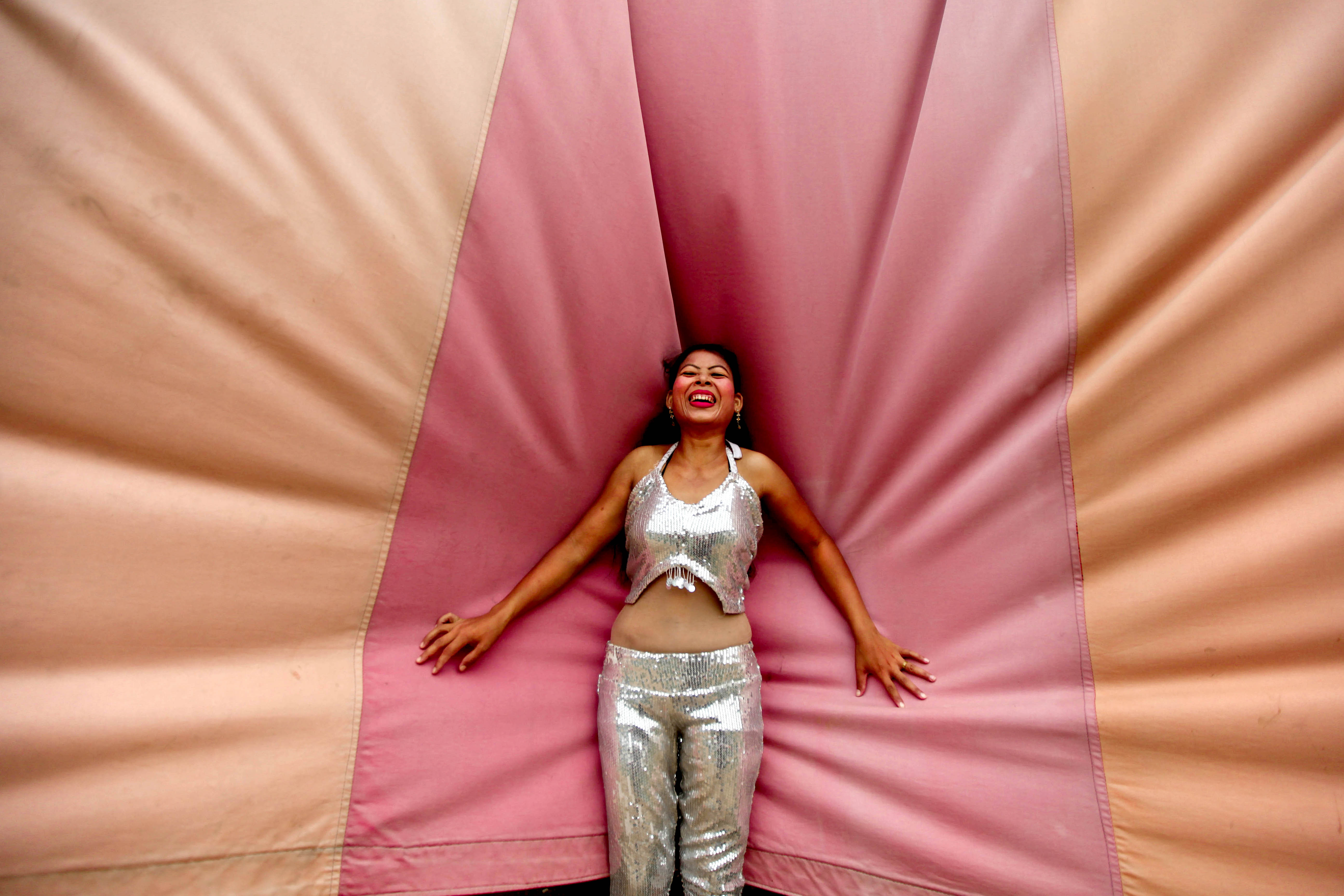
“My father Hiralal used to do weightlifting in a circus,” Barman said. “When I joined here, my Ustad Mohan Lal Dogra first taught me skating. Then I learnt juggling, unicycling, trapeze and acts with animals. But from the day there animals were banned in circuses, the business has diminished.” She added, “I have read in the news that it was done because animals were treated badly in circuses. But can you imagine a person not taking care of something that brings him employment? Wherever I have worked, the animals were looked after as well as the artists.”
“Each year, I hear about at least one or two circus getting closed. Some of them were where I used to work, and to think of everyone I know being unemployed now is saddening.”
The African Acrobats

Anemut and his group of friends Abinet, Natnaei and Zerubabei come from the same neighborhood in Ethiopia. “We were always interested in juggling and acrobatics,” he said. “Back home, we were known all over for our stunts. Everyone calls Abinet ‘Spiderman’ because of his agility and gymnastic skills. Natnaei is the Yoga Man here, and Zerubabei can balance himself on a ladder while performing various tricks.”
Anemut, whose skills are limited to juggling, is the only one who speaks fluent English—”That’s why since we have come here, I am the leader,” he said.
Last month, after his 20th birthday, Anemut got in touch with Anil Kumar. “This is my first time in India,” he said. “Everything from food to culture is bound to be different. For the first two weeks when after we came here, we prepared our Ethiopian food for lunch and dinner. My favourite is injera but we cannot find all the ingredients that are required, so now we mostly eat macaroni or spaghetti.”
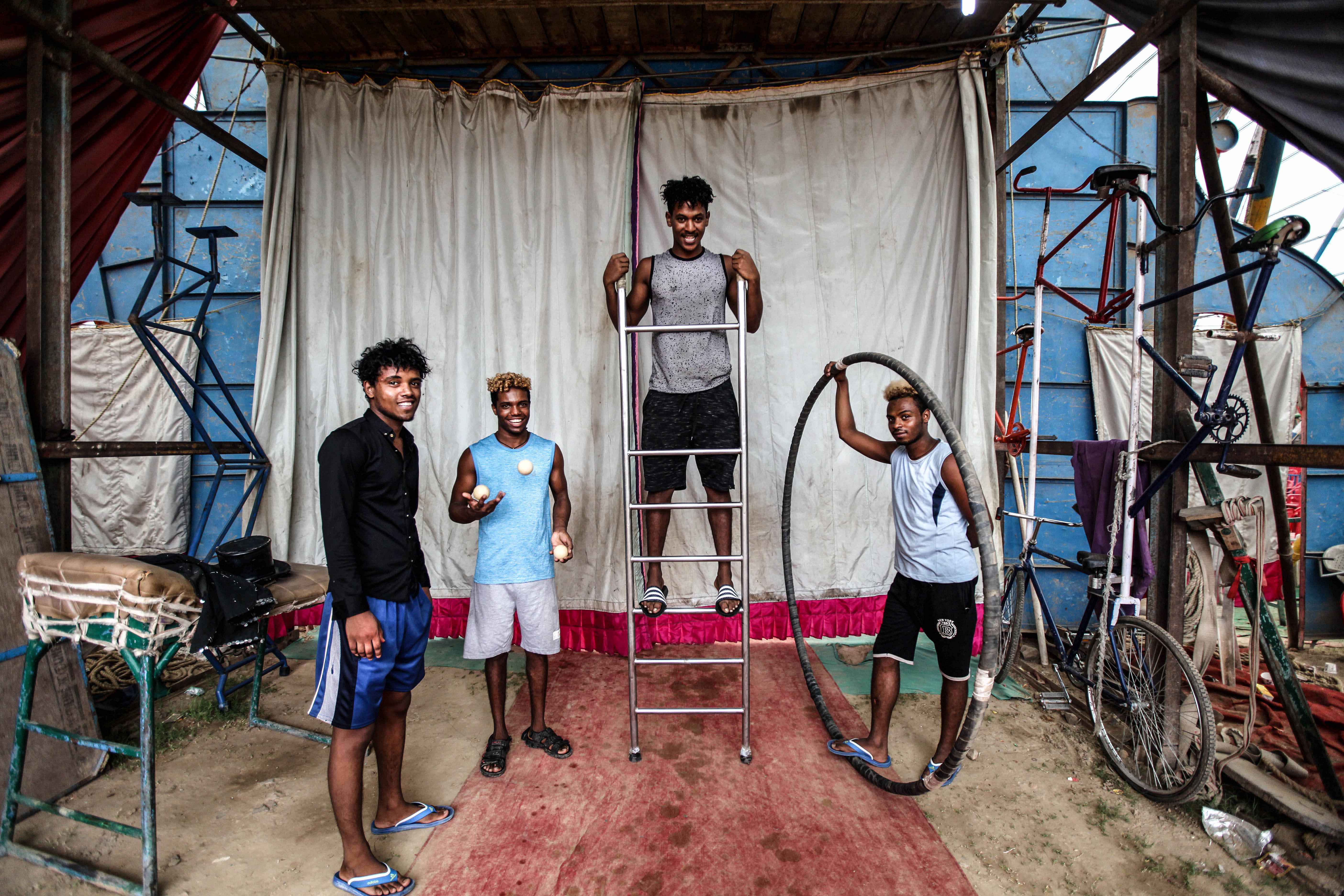
After work ends at 8 PM, the acrobats sometimes go to a market or mall. “My sister has given me a list of things that she wants from India,” Anemut said. “I had heard that India would be hot at this time of the year but I didn’t know it was going to be even hotter than Ethiopia! It’s the rainy season there and sometimes I miss it a lot. But I also enjoy what I do, otherwise why would I come all the way here?”
The Strongman and the Bikerni
Everyone in the circus calls Krishna Jadav “Kiran”. With massive biceps and tattoos, he is the star of Asia. “Both my parents were circus artists and I was born in a tent,” he told me. “They tried to get me out of here and sent me to a school in Ulhasnagar, Mumbai. I would come back to visit my parents during the holidays, but one summer I refused to go back.”
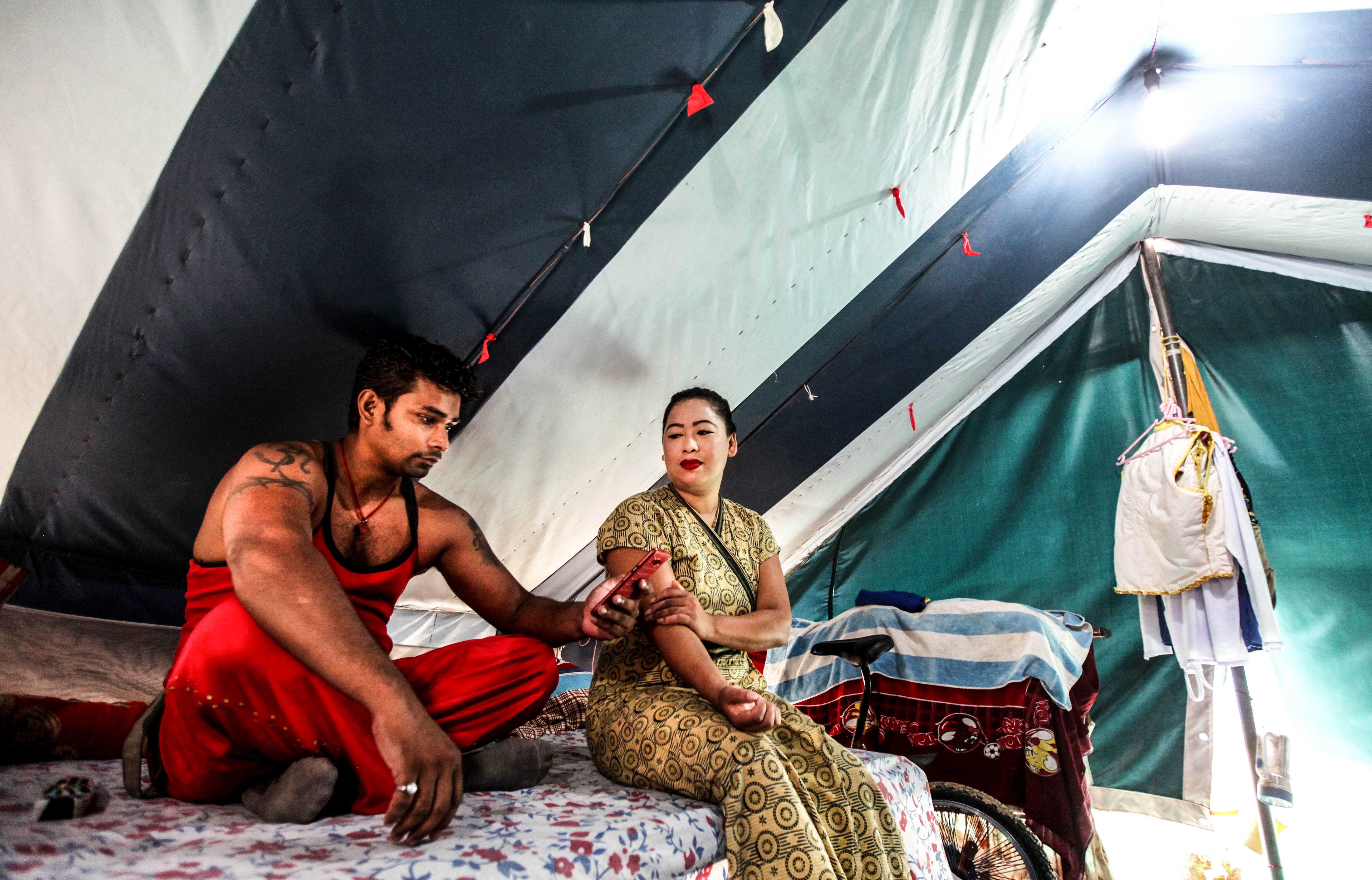
Savina told us her aunt brought her to the circus. She and Kiran used to do a lot of acts together, but she left most performance behind after an accident doing a bike act. “There is only one rule in the circus,” Savina said, “Hile rozi bahane maut. [Jobs change, but death is certain.] It means that the work you do comes from something specific, but death can come through any excuse. There are two things that no one can decide: love and death.”
More
From VICE
-

Sanja Baljkas/Getty Images -

Terrance Barksdale from Pexels -

Christina House / Los Angeles Times via Getty Images -

Photo: Whiteland Police Department
